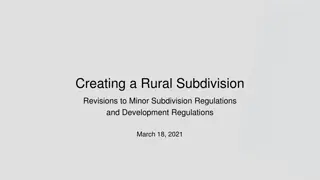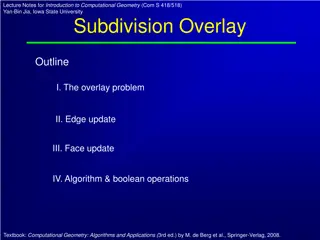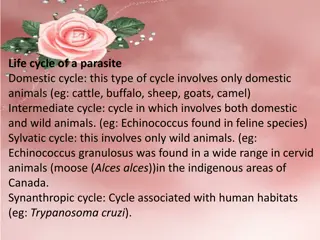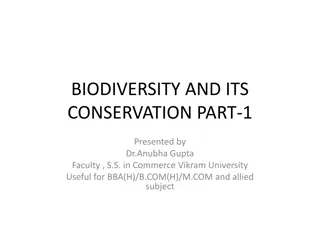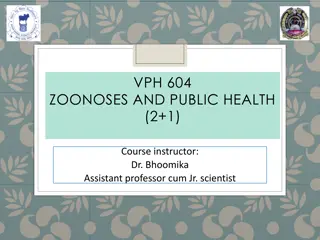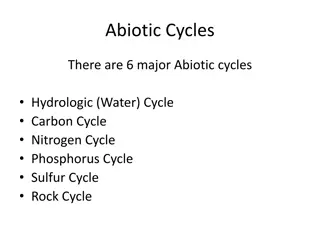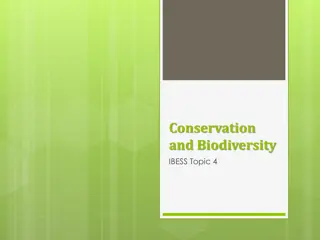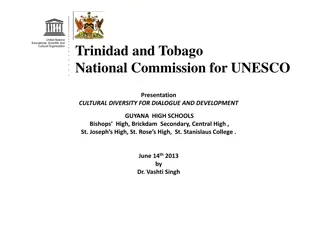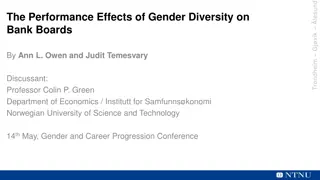Diversity and Life Cycles of Mastigomycota Subdivision Haplomastigomycotina
Mastigomycota Subdivision Haplomastigomycotina comprises diverse classes, including Chytridiomycetes, classified based on flagella characteristics. Chytridiomycetes are motile in aquatic habitats, with some exhibiting parasitic behavior. The subclass Chytridiales includes unicellular organisms with rhizoids, some causing diseases like Potato wart. Blastocladiales feature saprophytic species like Allomyces, exhibiting a unique alternation of generations lifecycle.
Download Presentation

Please find below an Image/Link to download the presentation.
The content on the website is provided AS IS for your information and personal use only. It may not be sold, licensed, or shared on other websites without obtaining consent from the author. Download presentation by click this link. If you encounter any issues during the download, it is possible that the publisher has removed the file from their server.
E N D
Presentation Transcript
Division 2: Mastigomycota Sub division1: Haplomastigomycotina This sub division classified to three classes depending on number, type and location of flagella Class 1: Chytridiomycetes General characteristics:- 1- Production motile cell zoospores (planogametes) each with a single, posterior, whiplash flagellum. 2- Chytridiomycetes are more prevalent in aquatic habitats, (Why?)many of them, however, also inhabit the soil, some of them are parasites. 3- Somatic structures are: A- Coenocytes structure. B- Multinucleate, globose or oval with or without rhizoid C- Well- develops mycelium.
This class was classified into three orders: Order1: Chytridiales Order2: Blastocladiales Order 3: Monoblepharidales Order 1: Chytridiales: General characteristics:- 1- The organisms which included in this order are unicellular, globose, with or without rhizoid and holocarpic. 2- Water or soil inhabiting species, many of them former parasitic on algae and water mold, many of the later on vascular plants. 3-Synchytrium endibioticum causes the disease known as Potato wart on Potato-.
Life cycle of Synchytrium endobioticum: The fungus causes hypertrophy and hyperplasia of the surface cell layers of the infected Potato tubers; which contain resting sporangia When the warts lyses, the resting sporangia are release in soil, and then the zoospores are released when the conditions are suitable The zoospores are penetrating into the host through the root hairs, then the zoospore increase in size and produce two layers chitinous wall around itself to form prosorus The fungus- parasite- increase in size, and mitosis is started to give 32 nuclei, then cytoplasmic septa are formed to form 4-9 sporangia in one sac Sorus The mitosis is continuous to give 100-300 nuclei in each sac, each nuclei will be converting to zoospore in the presence of water The zoospore can be penetrating the host again.*
Order 2: Blastocladiales General characteristics: 1- Most of them are saprobes on animals and plants debris. 2- Vegetative structure is Eucarpic. 3- Somatic structure consists of basal cell with rhizoid and one sporangium or more. Family: Blastocladiaceae Genus: Allomyces
Life cycle of Allomyces:- Allomyces species exhibit a definite alternation of generations (haploid gametothallus alternating with diploid sporothallus) The gametothalli produce colorless female gametangia and orange male gametangia usually in a 1:1 ratio. In A. macrogynus (The male gametangia are smaller than female and borne on the later) In A. arbuscula (The male gametangia are bigger than female and borne below the later). Both types of gametangia release motile gametes, the gametes are posterior uniflagellate, copulation then occurs to give zygote.
Zygote enlarges and gives rise to the first hyphal tube, which elongates, branched dichotomously, and develops into a diploid sporothallus. At maturity, the sporothalli form two types of sporangia; thin walled, elongated, colorless zoosporangia (Mitosporangia) and thick-walled, pitted, reddish brown resting sporangia (Meiosporangi ) The zoosporngia germinate soon after their formation, releasing diploid zoospores mitospores- that swim about for a time, encysted and give rise to sporothalli, thus repeating the diploid generation. The resisting sporangia- Meiosporangia- require a rest of 2-8 weeks or more before they germinate. Meiosis in the resting sporangia takes place at the time of germination to form haploid zoospores.
Order 3: Monoblepharidales Family: Monoblepharidaceae Genus: Monoblepharis Life cycle of Monoblepharis polymorpha: The somatic thallus consists of hyphae whose protoplasm which is highly vacuolated, appears foamy. Elongated sporangia are borne singly at the hyphal tips. A number of uniflagellate gametes, called Antherozoids, are formed within and released from each antheridium
Division 2: Mastigomycota Sub division 1: Haplomastigomycotina Class 2: Plasmodiophoramycetes: General characteristics: 1- The somatic phase is a plasmodium that develops within host cells 2- Produce two types of spores zoospores and resting spores-. 3-When the resting spores are germinated give zoospores. Family: Plasmodiophoraceae Ex 1: Spongospora Ex 2: Plasmodiophora brassicae (Causes: Club-root disease in Brassicaceae)
Class 3: Hypochytridiomycetes: General characteristics: 1- are aquatic, fresh-water or marine chytrid like fungi whose motile cells are anterior uniflagellate, with a tinsel type flagellum. 2- have a rhizoidal or hypha-like vegetative system (hence the prefix "Hypho-"). Order: Hypochytridiales Family1: Hyphochytriaceae Genus Cystochytrium Genus Hyphochytrium Family2: Rhizidiomycetaceae Genus Rhizidiomyces



